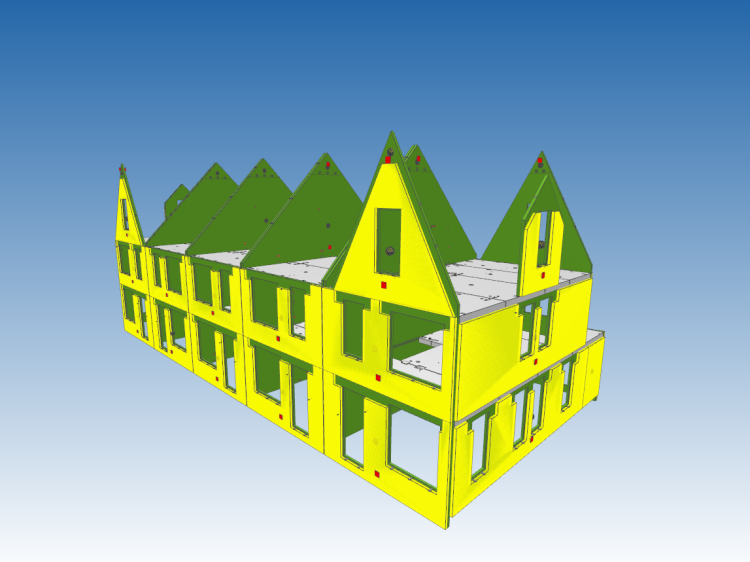



Architectural BIM is a type of BIM (Building Information Modeling) that includes detailed information about the building's layout, spatial relationships, and architectural elements, such as walls, windows, and doors. This type of BIM is typically included in a Level 3 BIM model, which is a highly detailed and accurate digital representation of the building or infrastructure project.
To create an architectural BIM model, designers and architects typically use specialized software and tools to input data about the building's design, including its overall layout, the dimensions and properties of its architectural elements, and the materials and finishes that will be used. This information is then used to generate a digital model of the building, which can be used by all project stakeholders to support decision making, coordination, and communication throughout the project.
For example, an architectural BIM model can be used to evaluate the impact of different design options on the building's aesthetics, functionality, and energy performance, and to identify potential conflicts or dependencies between different design elements. This can help to support the development of more effective, efficient, and sustainable building designs.
Overall, Architectural BIM involves the creation of a digital model of the building or infrastructure project that includes detailed information about its layout, spatial relationships, and architectural elements, and the use of that model to support the design and construction of the building.
To create an architectural BIM model, you will need specialized software and tools that are specifically designed for building design and modeling. Some of the most common types of software used for architectural BIM include:
To create an architectural BIM model using this software, designers and architects typically input data about the building's design, including its overall layout, the dimensions and properties of its architectural elements, and the materials and finishes that will be used. The software then uses this data to generate a digital model of the building, which can be used to visualize and evaluate the design, and to support coordination and communication among project stakeholders.
To create an effective architectural BIM model, it is important to ensure that the model is accurate, consistent, and complete, and that it includes all of the necessary information to support decision making, coordination, and communication throughout the project. This may involve working closely with other members of the project team, and using collaboration and communication tools to ensure that the model is up to date and reflects the latest design decisions.
Overall, creating an architectural BIM model involves using specialized software and tools to input data about the building's design, and using that data to generate a digital model of the building. It is important to ensure that the model is accurate, consistent, and complete, and that it includes all of the necessary information to support the design and construction of the building.
An architectural BIM model can be made more accurate by ensuring that it includes detailed and accurate information about the building's design and construction, and by regularly updating and verifying the information in the model.
To ensure the accuracy of an architectural BIM model, designers and architects can take the following steps:
Overall, to ensure the accuracy of an architectural BIM model, it is important to input detailed and accurate information about the building's design, to use standardized protocols and conventions for organizing the information in the model, to use validation and verification tools to identify and correct errors, and to regularly review and update the model.
An architectural BIM model can be made more consistent by ensuring that it includes standardized protocols and conventions for inputting and organizing the information in the model, and by regularly verifying and updating the information in the model.
To ensure the consistency of an architectural BIM model, designers and architects can take the following steps:
Overall, to ensure the consistency of an architectural BIM model, it is important to use standardized protocols and conventions for organizing the information in the model, to use validation and verification tools to identify and correct errors, and to regularly review and update the model. This can help to ensure that the model is consistent, organized, and easy to understand, and that it accurately reflects the latest design decisions.
An architectural BIM model can be made more complete by ensuring that it includes all of the necessary information about the building's design and construction, and by regularly verifying and updating the information in the model.
To ensure the completeness of an architectural BIM model, designers and architects can take the following steps:
Overall, to ensure the completeness of an architectural BIM model, it is important to input detailed and accurate information about the building's design, to use standardized protocols and conventions for organizing the information in the model.
Copyright © 2024 The BIM Engineers. All Rights Reserved | Design & Developed by Prettify Creative